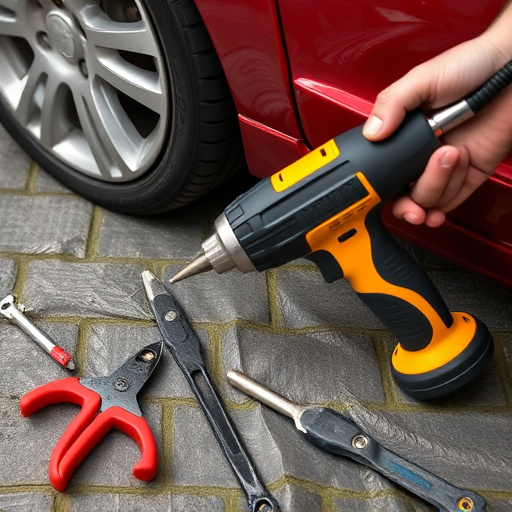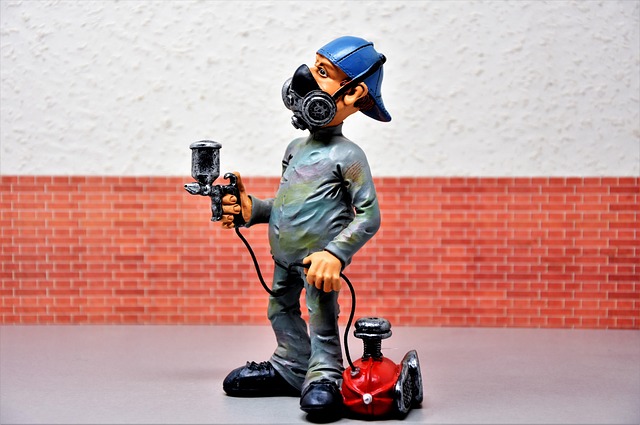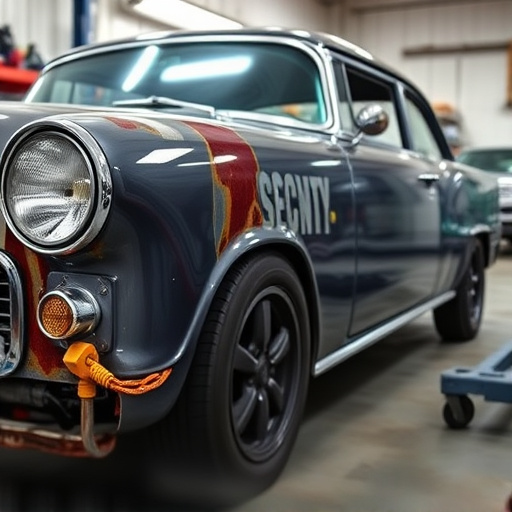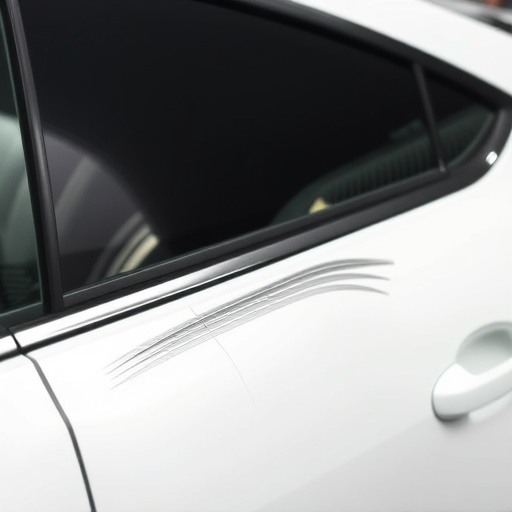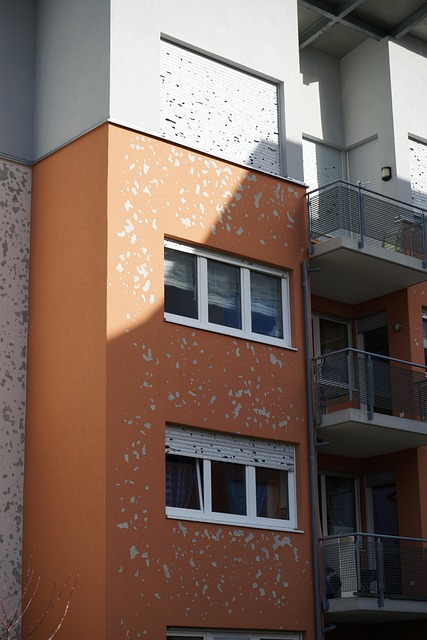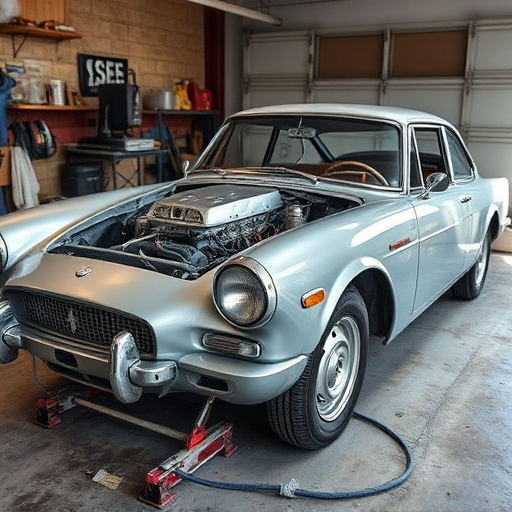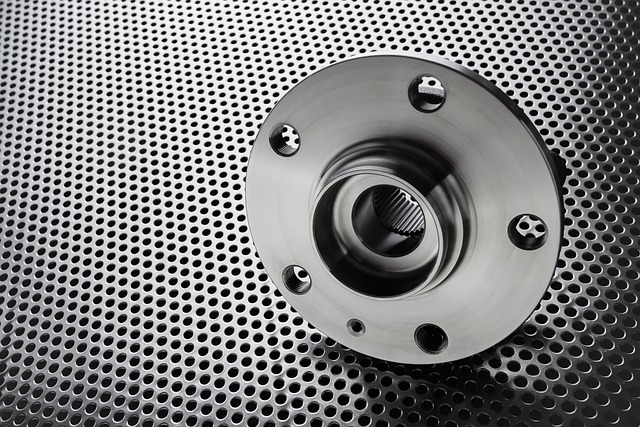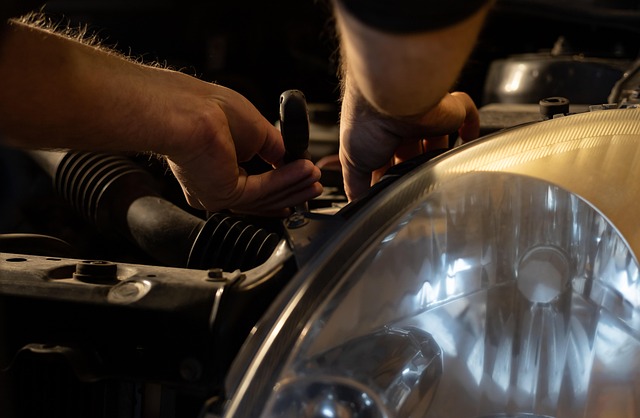High-Strength Steel Repair (HSSR) is a specialized technique that revitalizes structural steel across industries like automotive, construction, and manufacturing. It addresses cracks, corrosion, and defects using cutting-edge materials and methods to enhance safety, mitigate failure risks, and prolong the lifespan of steel components. The meticulous process involves thorough inspection, preparation, welding (if complex), grounding, smoothing, and protective coating application, ensuring seamless blend and structural soundness. HSSR offers superior strength, durability, lightweight designs, reduced material costs, excellent corrosion resistance, and improved performance post-accidents compared to traditional repair methods.
“Uncovering the Fundamentals of High-Strength Steel Repair: A Comprehensive Guide. High-strength steel repair is a specialized process, crucial for maintaining structural integrity in various industries. This article demystifies this technique, offering insights into its significance and application. We’ll explore why it’s vital for critical infrastructure and complex machinery. Through a step-by-step breakdown, you’ll understand the meticulous process involved. From construction to automotive, the benefits of high-strength steel repair are evident, ensuring longevity and safety.”
- What is High-Strength Steel Repair and Why is it Important?
- The Process of High-Strength Steel Repair: Step-by-Step Guide
- Common Applications and Benefits of High-Strength Steel Repair
What is High-Strength Steel Repair and Why is it Important?
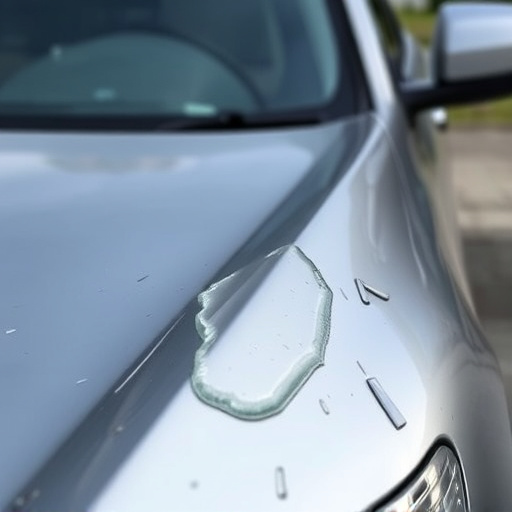
High-Strength Steel Repair (HSSR) is a specialized technique focused on restoring and reinforcing damaged or weakened structural steel components in various industries, including automotive, construction, and manufacturing. This process involves the use of advanced materials and methods to repair cracks, corrosion, and other defects, ensuring the structural integrity and longevity of steel structures. HSSR is particularly crucial in critical applications where traditional repair techniques might not provide sufficient strength and durability.
The importance of HSSR lies in its ability to enhance safety, reduce failure risks, and extend the lifespan of steel-based components. Unlike conventional car scratch repair or tire services, which are primarily cosmetic, HSSR addresses structural weaknesses that could lead to catastrophic failures. In auto painting or other industrial processes, HSSR ensures that repairs not only match the original aesthetic but also maintain the structural soundness of the steel, preventing potential hazards and saving costs in the long run.
The Process of High-Strength Steel Repair: Step-by-Step Guide
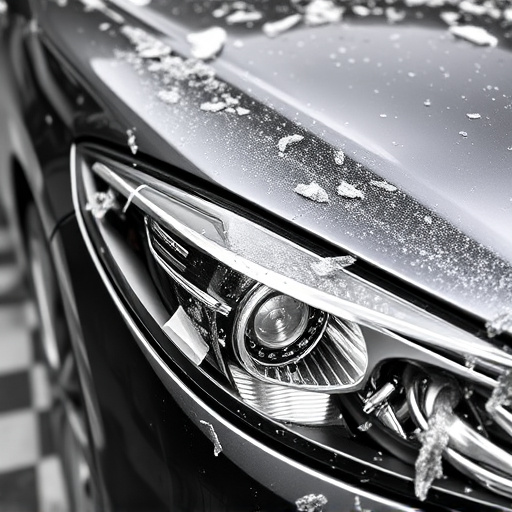
The process of high-strength steel repair involves a meticulous approach to ensure structural integrity and aesthetic restoration. It begins with thorough inspection to identify the extent of damage, which could range from dents and scratches to more severe cracks or corroded areas. Once the damaged section is pinpointed, preparation begins. This step includes cleaning the affected area to remove any debris, rust, or old repair compounds using specialized tools and solvents. After thorough drying, a precise cut is made around the damage, carefully separating it from the surrounding steel.
The heart of high-strength steel repair lies in the selection and application of suitable materials. High-quality, corrosion-resistant patches or panels are chosen to match the original metal’s properties and strength. These are then precisely shaped and fitted into the cutout space, ensuring a seamless blend with the existing body. For complex repairs, specialized welding techniques may be employed to fuse the new material securely. Upon completion of the welding, the repair area is ground smooth, and any excess material is removed, leaving a clean, ready-to-finish surface. Finally, a protective coating, often a high-performance paint or primer, is applied to safeguard against future corrosion, ensuring the restored area matches the vehicle’s overall appearance and structural soundness through superior auto bodywork techniques.
Common Applications and Benefits of High-Strength Steel Repair

High-Strength Steel Repair (HSSR) has become indispensable across various industries due to its superior strength and durability. Commonly used in construction for reinforcing structures like bridges and buildings, HSSR offers enhanced structural integrity, making it a game-changer in safety-critical applications. Its robust properties also make it ideal for demanding sectors such as automotive manufacturing and auto body work. In vehicle dent repair and car collision repair scenarios, HSSR ensures that vehicles not only regain their aesthetic appeal but also maintain peak structural performance after accidents.
Beyond these practical applications, HSSR provides significant benefits. It promotes lightweight designs, reducing material costs and improving resource efficiency in production processes. Moreover, its excellent corrosion resistance makes it suitable for both indoor and outdoor use, expanding its usability in diverse environments. In the realm of auto body work, this technology allows for more precise repairs, ensuring vehicles return to their pre-incident condition with superior strength and reliability—a far cry from traditional repair methods that might leave residual weaknesses.
High-strength steel repair is a specialized technique that offers significant advantages in various industries. By understanding the basics and process, professionals can efficiently address structural weaknesses and enhance the longevity of steel structures. This article has provided an overview of high-strength steel repair, highlighting its importance and practical applications. Embracing this innovative solution allows for robust, safe, and aesthetically pleasing outcomes, ensuring structures meet modern demands.
